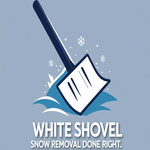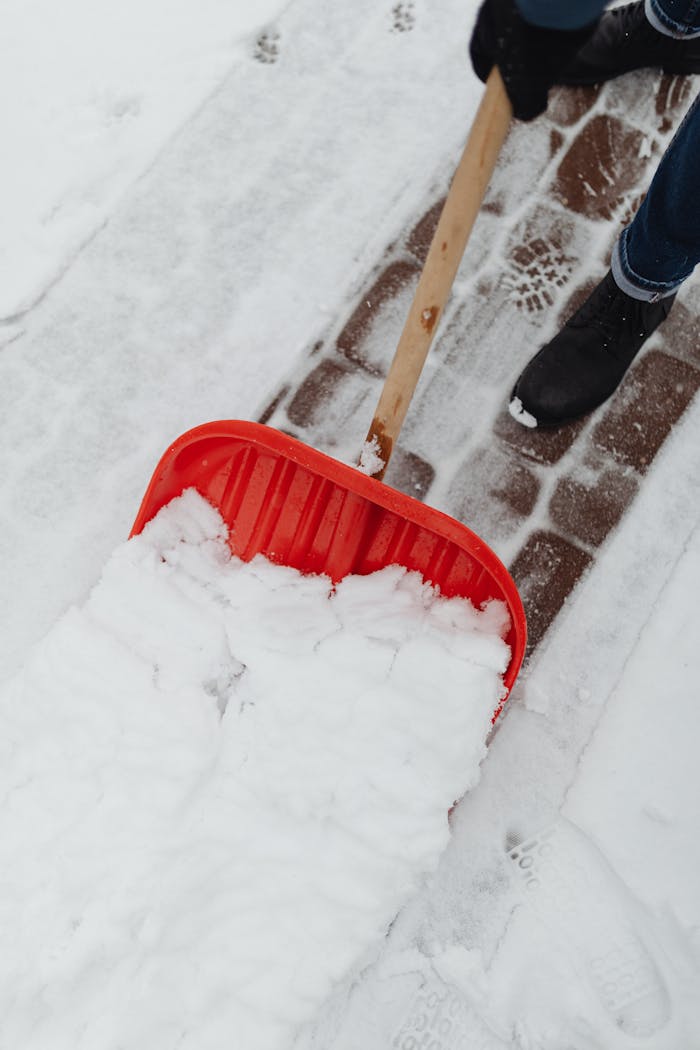Using a white shovel for snow removal offers several advantages that can enhance the efficiency and effectiveness of this winter chore. One of the most notable benefits is visibility. The bright white color of the shovel stands out against the backdrop of snow, making it easier to locate and use, especially during heavy snowfall or in low-light conditions.
This visibility can be particularly beneficial for individuals who may have difficulty seeing darker-colored tools against a snowy landscape. The contrast provided by a white shovel can help prevent accidents and ensure that the tool is always within reach when needed. In addition to visibility, white shovels often come with specific design features that cater to snow removal.
Many manufacturers create shovels with lightweight materials that are easy to maneuver, reducing the physical strain associated with shoveling snow. The ergonomic designs of these shovels can also help minimize back and shoulder injuries, which are common among those who frequently engage in snow removal. Furthermore, the reflective nature of a white shovel can help keep it cooler in sunny conditions, preventing the handle from becoming too hot to hold comfortably after being exposed to sunlight.
Tips for Proper Technique and Use of a White Shovel
To maximize the effectiveness of a white shovel during snow removal, employing proper technique is essential. One key aspect is to maintain a good posture while shoveling. Keeping your back straight and bending at the knees allows you to lift snow using your legs rather than straining your back.
This technique not only reduces the risk of injury but also enables you to move larger amounts of snow more efficiently. Additionally, it is advisable to push snow rather than lift it whenever possible. Pushing requires less energy and minimizes the risk of overexertion.
Another important tip is to take breaks as needed. Shoveling snow can be physically demanding, especially after heavy snowfall. It’s crucial to listen to your body and rest if you start to feel fatigued.
Hydration is also vital; drinking water before and after shoveling can help maintain energy levels and prevent dehydration. Moreover, using a white shovel with a wide blade can help clear larger areas more quickly, allowing you to finish the task sooner and reduce the time spent outdoors in cold conditions.
Understanding the Different Types of White Shovels for Snow Removal
When it comes to white shovels designed for snow removal, there are various types available, each tailored for specific tasks and conditions. One common type is the traditional snow shovel, which features a broad, flat blade ideal for lifting and moving snow. These shovels often have a curved handle that allows for better leverage and control while shoveling.
Some models may also include a reinforced edge for cutting through ice or packed snow, making them versatile tools for winter weather. Another type is the snow pusher, which is designed primarily for pushing snow rather than lifting it. These shovels typically have a wider blade and a lower profile, allowing users to slide snow off surfaces like driveways and sidewalks with minimal effort.
Snow pushers are particularly effective on flat surfaces where lifting is not necessary, making them an excellent choice for those who want to clear large areas quickly. Additionally, there are specialized shovels designed for specific tasks, such as roof rakes for removing snow from rooftops or compact shovels for tight spaces.
How to Choose the Right White Shovel for Your Snow Removal Needs
Selecting the right white shovel for snow removal involves considering several factors that align with your specific needs and preferences. First, assess the typical snowfall in your area. If you experience heavy snowfall regularly, investing in a sturdy shovel with a wide blade may be beneficial.
A wider blade can help you move larger amounts of snow at once, reducing the time spent shoveling. Conversely, if you live in an area with light snowfall, a smaller shovel may suffice and be easier to handle. Another consideration is your physical condition and strength.
If you have any pre-existing injuries or limitations, opting for a lightweight shovel with an ergonomic design can make a significant difference in comfort and ease of use. Additionally, consider the materials used in the shovel’s construction; plastic blades are generally lighter but may not be as durable as metal options. Ultimately, choosing a shovel that feels comfortable in your hands and suits your physical capabilities will enhance your snow removal experience.
Safety Precautions to Keep in Mind When Using a White Shovel for Snow Removal
Safety should always be a priority when using a white shovel for snow removal. One of the most critical precautions is to dress appropriately for the weather conditions. Wearing layers of clothing can help regulate body temperature while providing insulation against the cold.
Additionally, wearing waterproof boots with good traction can prevent slips and falls on icy surfaces. Gloves are also essential; insulated gloves will keep your hands warm while providing grip on the shovel handle. It’s also important to be mindful of your surroundings while shoveling.
Look out for obstacles such as curbs, steps, or uneven surfaces that could pose tripping hazards. If you’re shoveling near roadways or driveways, be aware of traffic and ensure you’re visible to drivers. Furthermore, take care not to overexert yourself; if you start feeling fatigued or experience any pain, it’s wise to take a break or stop altogether.
Snow removal should be done at a pace that feels comfortable to avoid injuries related to overexertion.
Maintaining and Caring for Your White Shovel to Ensure Longevity and Efficiency
Proper maintenance of your white shovel is essential for ensuring its longevity and efficiency throughout the winter season. After each use, it’s advisable to clean off any remaining snow or ice from the blade and handle. This practice prevents rusting or damage to the materials over time.
For metal shovels, applying a light coat of oil can help protect against corrosion, while plastic shovels should be stored in a dry place away from direct sunlight to prevent warping. Additionally, inspecting your shovel regularly for any signs of wear or damage is crucial. Check for cracks in the blade or handle that could compromise its functionality during use.
If you notice any issues, consider repairing or replacing the shovel before the next snowfall arrives. Storing your shovel properly during the off-season is also important; keeping it in a dry area will help maintain its condition and ensure it’s ready for use when winter returns.
The Environmental Impact of Using a White Shovel for Snow Removal
The environmental impact of using a white shovel for snow removal is often overlooked but deserves consideration. Unlike mechanical snow removal methods such as snow blowers or plows that consume fuel and emit greenhouse gases, using a manual shovel is an eco-friendly option that relies solely on human power. This method reduces carbon emissions associated with fossil fuel consumption and contributes positively to environmental sustainability.
Moreover, manual shoveling allows for greater control over where snow is placed after removal. This control can minimize disruption to local ecosystems compared to larger machines that may inadvertently damage vegetation or soil structures during operation. By choosing to use a white shovel instead of powered equipment, individuals can contribute to reducing their carbon footprint while effectively managing snow accumulation in their immediate environment.
Alternative Uses for a White Shovel Beyond Snow Removal
While primarily designed for snow removal, a white shovel can serve various alternative purposes throughout the year. One practical use is as a gardening tool; its lightweight design makes it suitable for digging small holes or moving soil and mulch around flower beds or vegetable gardens. The bright color can also make it easier to spot among other gardening tools, ensuring it doesn’t get lost in the shed or garage.
Additionally, a white shovel can be utilized during outdoor events such as picnics or barbecues. It can serve as an effective tool for moving charcoal or wood chips when starting a fire pit or grill. Its versatility extends even further; in emergency situations like flooding, a shovel can assist in moving debris or clearing drainage paths around homes and properties.
This adaptability makes owning a white shovel not only practical for winter but also beneficial year-round in various contexts.
FAQs
What is white shovel snow removal?
White shovel snow removal is a professional snow removal service that uses shovels to clear snow from driveways, sidewalks, and other outdoor areas. This method is often preferred for smaller areas or areas with delicate landscaping where snow blowers or plows may cause damage.
How does white shovel snow removal work?
White shovel snow removal involves a team of workers using shovels to manually clear snow from designated areas. The workers typically shovel the snow into piles and then remove it from the property, leaving the area clear and safe for pedestrians and vehicles.
What are the benefits of white shovel snow removal?
Some benefits of white shovel snow removal include its precision in clearing snow from smaller or delicate areas, its ability to avoid damage to landscaping or property, and its effectiveness in areas where snow blowers or plows may not be suitable.
When is white shovel snow removal recommended?
White shovel snow removal is recommended for smaller areas such as residential driveways, sidewalks, and pathways, as well as for areas with delicate landscaping or where snow blowers or plows may cause damage.
Is white shovel snow removal environmentally friendly?
White shovel snow removal is considered to be more environmentally friendly than using snow blowers or plows, as it does not emit any exhaust or use fuel. Additionally, it does not contribute to noise pollution.




